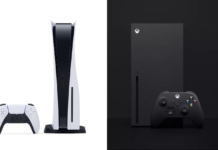Looking back at Nintendo’s output over the last 12 months, Splatoon is an easy marker to point to as one of Nintendo’s greatest trophy accomplishments of 2015. Perhaps greater than Super Mario Maker, for its fresh creative vision and depth both as a category entry and as a new IP. What is a truly innovative effort from a company that has been faulted for relying too much on ground already paved, really is a snapshot of the bold and non-conforming moves they’ve made throughout the year. Revealed is a conscious insistence to go against the grain, challenging trends and contrasting outside influences. This is not to say that all their efforts can be seen as triumphs, yet Splatoon is not an isolated case of leadership on Nintendo’s part.
Operating in conjunction with the company’s developing plans to tap the mobile market, 2015 was a time for experimentation in payment models with the launch of multiple free-to-start (a term coined by Nintendo) titles on the Nintendo 3DS eShop. In truth, such efforts were foreshadowed by Steel Diver: Sub Wars and Rusty’s Real Deal Baseball one year prior. The former, a spin-off that no one could have predicted, adapting the formula of the 3DS launch title with a revised premise of underwater dogfights for its adaptive business model: play a handful of single-player missions for free and pay the premium cost for access to the full experience and new submarines. The latter, an original creation of baseball-themed mini-games, possessing a storefront with a “haggling” feature disguised as a payment model: chip away the cost of new content by negotiating with the shop owner and listening to his tale of family woe.

Both these admittedly quiet successes led Nintendo to follow a pattern of adapting existing properties for a new purpose and devising original creations with monetization in mind. In 2015, this took the form of Pokémon Picross, Stretchmo, Pokémon Shuffle, and Nintendo Badge Arcade. Notwithstanding the worthwhile gameplay twists of Pokémon Picross or Stretchmo’s high-quality puzzle setup that remains unencumbered by its business model, Nintendo Badge Arcade stands out the most for being a left-field creation. That 3DS Home Menu customization could be such a compelling draw as to be made fodder for a crane game is remarkable in itself. Add to this a model that incentivizes daily plays and Badge Arcade really earns its place as a permanent fixture of 3DS systems. Although its financial prerequisites could have been seen as less exploitive at a lower bar, the dangerously addictive quality of this application emerges nevertheless, still rendering it a success.
Beyond forging their own trends, Nintendo also took the year as opportunity to return to their origins as a toy company with greater momentum surrounding amiibo. While the concept of going where the money is can be a short-sighted and destructive move, Nintendo has done much to embrace this direction and done so in a way that demonstrates their awareness of the bigger picture, not straying from their larger mission and objectives as a business. While amiibo lived as standalone products when they were first introduced, 2015 saw Nintendo pairing releases with amiibo as part of packaged bundles, a sort of declaration that amiibo would serve a larger role in first-party experiences on a going-forward basis. Such was seen with Chibi-Robo!: Zip Lash, Yoshi Woolly World, and others.
Of particular note are Mario Party 10 and Animal Crossing: amiibo Festival, two experiences that treated amiibo as more than just unlock keys as games like Mario Kart 8 and Hyrule Warriors did. Instead, both provided sandboxes for amiibo figures to be used in connection with core gameplay ideas under the guise of digital board games, where they would serve a combined function of playing piece and dice-rolling mechanism. Unfortunately, both were unfairly criticized (the latter, exceedingly so), in reality because they didn’t meet personal expectations. And while debates can be had on the overall quality of these experiences, commendation should be given to Nintendo for integrating figures in a worthwhile way that showed growth over prior treatments.

In a similar regard, Nintendo also launched amiibo Cards to be used in the two Animal Crossing spin-offs of the year. These unconventional game pieces, which helped usher in the 3DS NFC Reader, are not only clever in their multi-functional quality (i.e., trading cards and digital content) but also in their connection to company roots, serving as a resurrection of e-Reader functionality explored in the 2000s. This base interactivity was the same catalyst that brought amiibo Tap: Nintendo’s Greatest Bits into existence, what was probably Nintendo’s biggest head-scratcher of the year. A demo service of sorts, the free application allowed players to read amiibo to gain access to brief moments in retro titles, borrowing from NES Remix and the Masterpieces feature seen in the last two Super Smash Bros. games. As a digital download with no discernible algorithms (i.e., where placing a particular amiibo will unlock content related to that character’s franchise), its purpose is unclear, even nondescript. But it does pique curiousity as to whether or not this odd experiment is setting the stage for something greater (think Pokémon Snap Station).
When they weren’t challenging industry perceptions or exploring new communication tools, Nintendo used 2015 to re-establish their position on existing intellectual property. The strongest manifestation of this, as betrayed by the snowballing hubbub, was the announcement of Metroid Prime: Federation Force. While its release was still far off from when it was first announced at E3 this year, the game’s co-operative bent wasn’t what ticked fans off the most; it was the decision to dampen (and in some cases strip away) Metroid fundamentals to make way for an experience set in a similar universe but seemingly only by name. Whether or not you buy into the backlash and see it as a bald-faced showing, there’s a bigger picture that should not be missed, and that is that Nintendo has shown this year a willingness to make lateral moves within existing franchises.

This was in fact a uniting theme among their 3DS releases: removing the life simulation aspect of Animal Crossing and leaving only the design and customization for Happy Home Designer; displacing Chibi-Robo from his 3D adventure-style games into the role of action hero for a 2D platformer; and exploring a three-person team dynamic to craft a wholly co-operative campaign in The Legend of Zelda: Tri Force Heroes. Nintendo’s resoluteness in this area has not meant experiences that stand above earlier efforts, but instead, experiences that extend the boundaries of their IP library (though, paradoxically, they are restrained executions) and involve players in scenarios beyond usual scope and indulgent fare offering varied gameplay styles with new appeals within favorite franchises.
Nintendo’s ranged approach this year brought several positive developments beyond those discussed above, such as Club Nintendo's departure to make room for a consolidated service, and even some unorthodox creations, like Code Name: S.T.E.A.M. By their sum efforts, Nintendo has demonstrated that they are indeed guided by their own curve, effectively refusing to follow and committing to leadership, however nontraditional the means. When they do decide to tackle the gust of their competitors or fluctuating industry trends, it is not with a transparent pettiness; Nintendo is careful to present meaningful contributions that challenge and inspire from a player and development standpoint. They’ve certainly done so this year, and as such, their role as an industry mover and as a company facing an internal paradigm shift incites more curiosity than the norm, moving into 2016.










